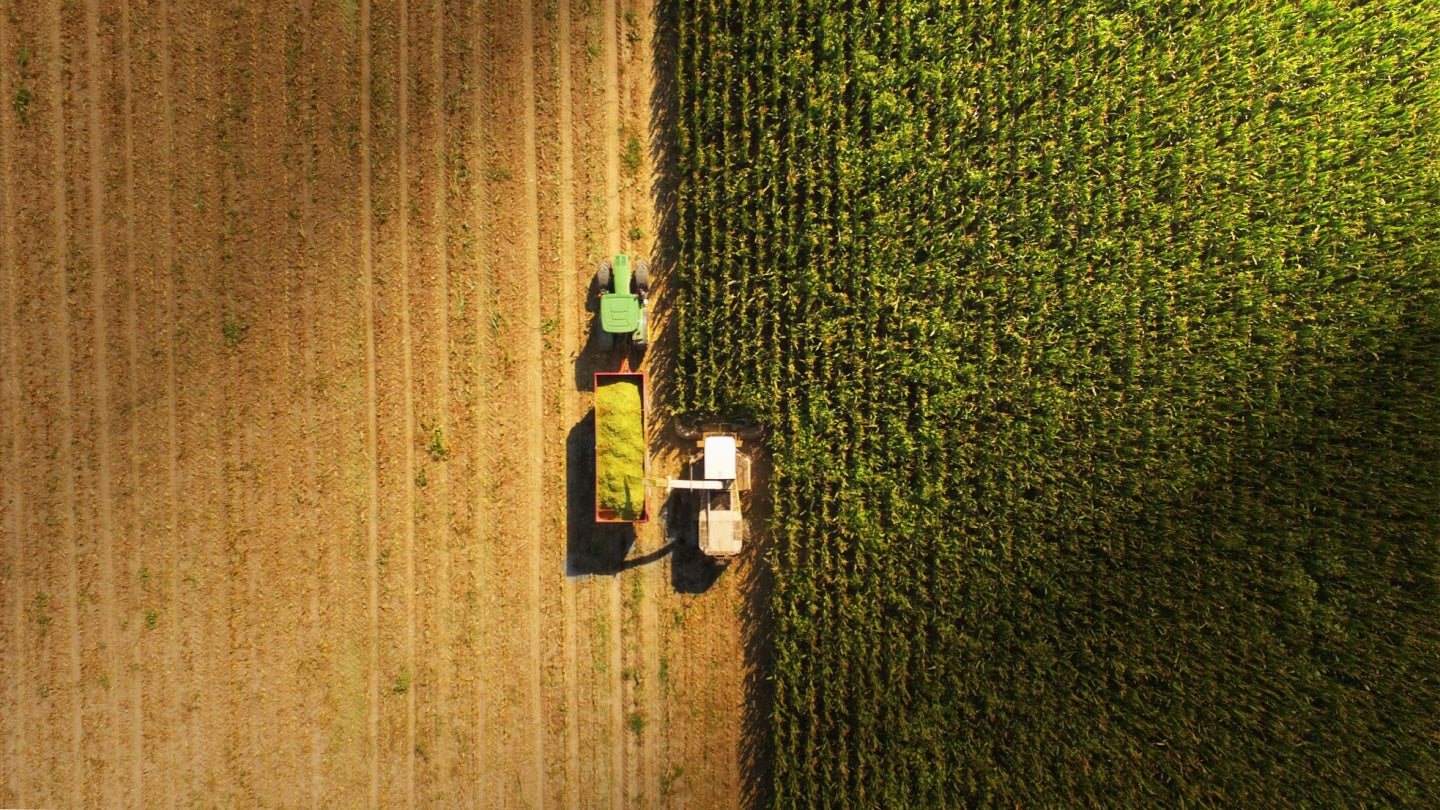John Deere—the agricultural machinery manufacturer and household name—has long been at the forefront of agricultural activity and is now leading the robotic farming transformation, a venture that could help to amplify its status.
Farming is facing numerous challenges from climate change, which is impacting crop yields, causing labour shortages, and leading to the rising cost of supplies and inputs. John Deere is set to automate parts of the farming process to alleviate some of these pressures.
John Deere autonomous tractors
All John Deere tractors are now equipped with the option of autosteering. Autosteering takes the stress from drivers and reduces the skill needed to operate them. Autosteering will soon become fully autonomous, with the announcement of John Deere’s 8R robot in 2022. The tractor uses AI and computer vision to navigate obstacles and safely operate unmanned and remotely.
One big benefit of the 8R tractor is the full automation of tilling on farms. Tilling is the process of preparing the land for crops and growing and involves dragging and overturning soil to redistribute nutrients and structure. It is time-consuming and labour-intensive and takes place directly after the harvest when farmers would prefer to head to market or process the harvest. John Deere has now employed the 8R to make this process fully automated. Farmhands are free to perform other tasks better suited to humans and the tractors can run alone for 12 hours until they need refuelling.
Precision fertilizers
John Deere is also using precision fertilizers alongside the 8R to boost production. Two examples are See & Spray and the ExactShot. The See & Spray technology launched back in 2021 and combines sensors and AI to target specific crops, reducing product waste and pollution.
By combining AI technology with the tractor, fertilizer use is estimated to fall by two-thirds. The ExactShot works similarly and is combined with an automated seed plater, the ExactEmerge planter. The ExactEmerge plants seeds and automatically adjusts spacing and depth by monitoring soil quality. The ExactShot then administers the exact amount of fertilizer needed depending on the depth the seed was planted and soil conditions.
How well do you really know your competitors?
Access the most comprehensive Company Profiles on the market, powered by GlobalData. Save hours of research. Gain competitive edge.

Thank you!
Your download email will arrive shortly
Not ready to buy yet? Download a free sample
We are confident about the unique quality of our Company Profiles. However, we want you to make the most beneficial decision for your business, so we offer a free sample that you can download by submitting the below form
By GlobalDataJohn Deere, AI and automation
John Deere estimates that with the combination of driverless tractors and precision fertilizers yields will increase by 9%, as planting space will be maximised and fertilizer costs can be reduced by 60%.
As autonomy improves and AI systems develop, the company hopes to automate more complex tasks in the farming cycle. John Deere’s VP of Automation and Autonomy has spoken of the company’s goals of automating the entire corn and soy production system in the next decade. However, widespread connectivity will be necessary to achieve this.
How space partnerships will provide the connectivity needed
Internet connectivity is vital for the technologies needed to automate the agricultural industry to its full potential. Unfortunately, many farms lack the high-speed bandwidths needed for feedback signals between sensors, robots, and AI systems. For example, the 8R tractor can only operate on high bandwidths, and remote control access from a phone or tablet is required for AI systems.
In January 2024, John Deere announced a partnership with SpaceX to help connect farmers and allow for full command of precision agriculture and automated systems. Compatible machines will now be fitted with Starlink terminals and 4G modems to connect relevant machines to the John Deere Operations Center and utilise SpaceX connections.
Brazil is a key agricultural market for John Deere and is one of the countries with weak rural connectivity, locking a large market out of automated agriculture. In 2024, the SpaceX partnership will begin its rollout with first releases being focused on parts of America and Brazil to capitalise on this large but unconnected market.
John Deere is creating robotic and AI solutions to modernise agricultural issues, primarily labour availability. These solutions can increase crop yields by 9% and reduce the costs of fertilizers by up to 60%. A partnership with SpaceX is allowing for the uptake of robotics in farming to become more accessible in the coming years.









Related Company Profiles
SpaceX